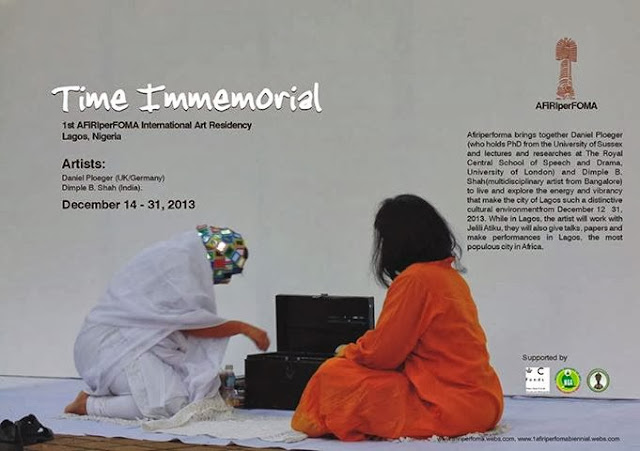This was last performance for the year 2013 on 27th December done in Ejigbo ,Lagos, Nigeria. This was one more performance done on issue of rape crime on women in respect to socio-cultural situation in Lagos especially in Ejigbo area. The core concept was already worked out but I was also improvising to bring in cultural element of Yoruba culture and wanted to do Intervention with local community.
Day before the performance I went for survey of area to fix an ideal spot for my performance in Ejigbo and also to know more about Yoruba culture and intermingle with local in one of discussion with community members one of the member came with outburst of news the leak in YouTube video of local women tortured in Ejigbo it was about how police official handled the situation it was about how one local women was tortured by inserting spices in her private part because she happen to do small crime of stealing small amount of spice in market. This was shocking news and issue of concern so then my thought melt down to same thoughts of justice and humanity and respect to women the issues of rapes violence against women there seems to be no stop for crimes, I made my mind to perform to bring this concern this time I used local traditional hair dress 'Gele' to represent the mass Yoruba girls along with their name written on my face. I asked the local ladies to tie this head dress in public.
Very openly and generously they collaborated in tie headdress on my head and it become spontaneous collaboration with them also some of women also reading out the names as they were written on my face. After thoroughly studying the area I had chosen my spot in one corner where four road meet and where people catch local yellow cabs and it is busy with heavy traffic. The performance was a durational performance went for an hour where I interacted with local people of Yoruba community with audio. I used audio which were circulated through multiple ear phones to my audience and one to one interaction with my audience. The local community very well received my performance and seriously listening to the audio and I had one to one interaction with lots of women, men’s and local people and explained then about my concern many on the main road stopped by to know more about the Performance.
Dimple B Shah
2013



































